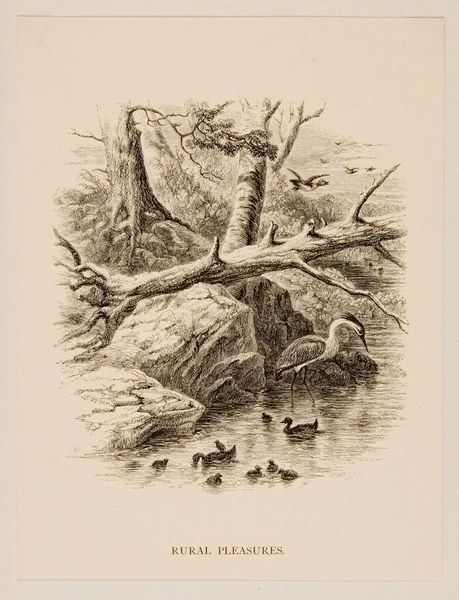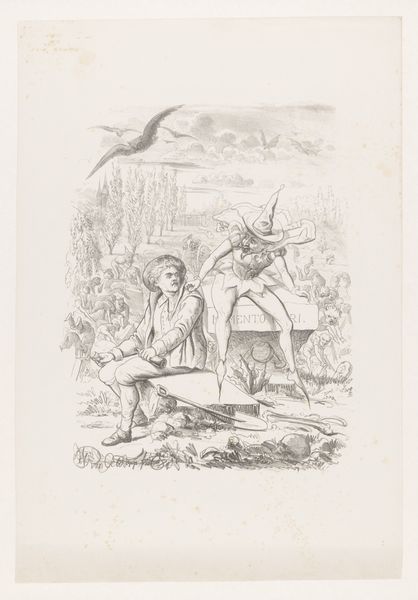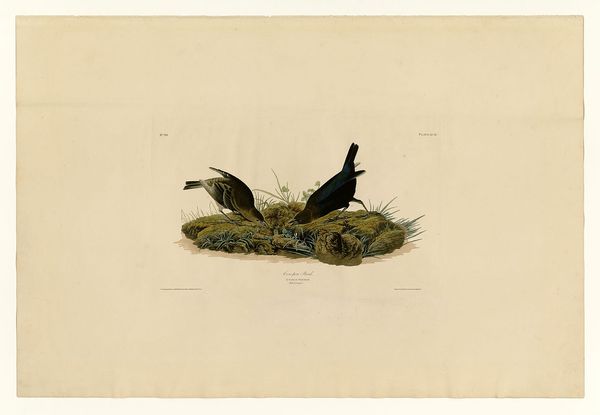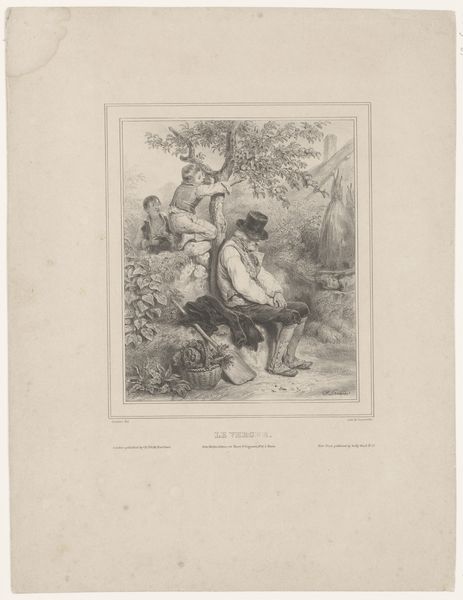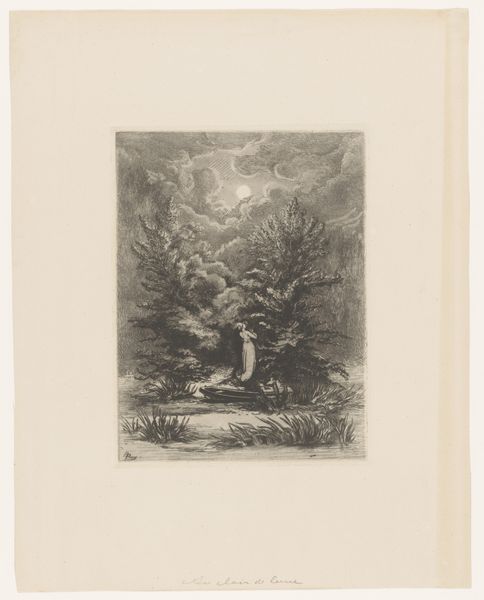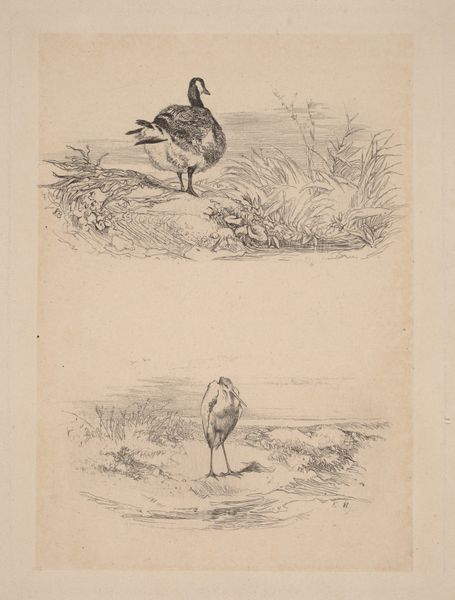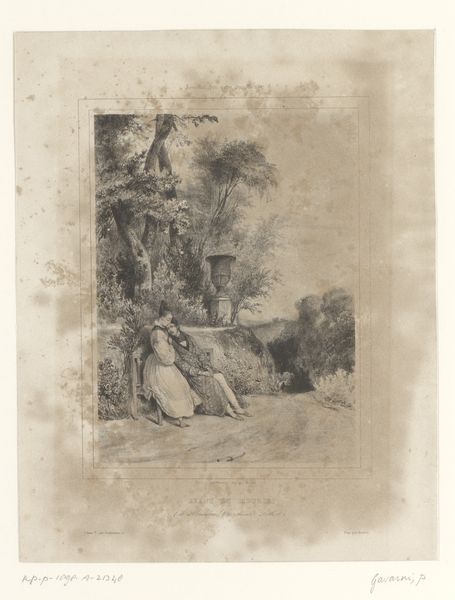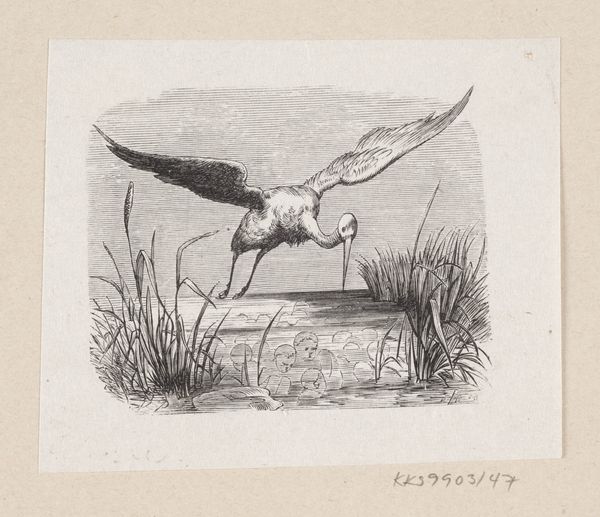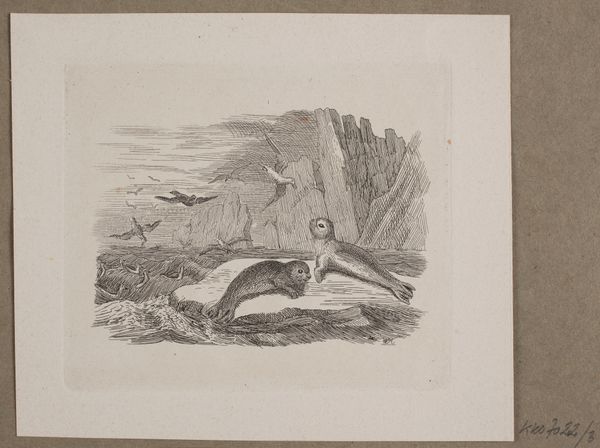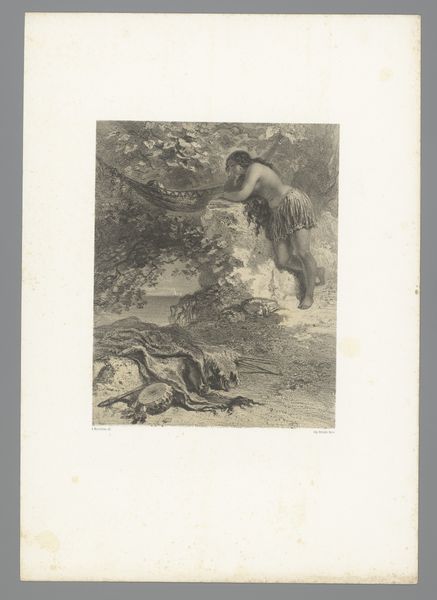
drawing, print, etching, woodcut, engraving
#
portrait
#
tree
#
drawing
#
still-life-photography
# print
#
etching
#
landscape
#
bird
#
figuration
#
woodcut
#
line
#
engraving
#
realism
Dimensions: Sheet: 9 1/4 × 6 5/8 in. (23.5 × 16.8 cm)
Copyright: Public Domain
Editor: Here we have "Magpie," an etching by Charles-François Daubigny, from 1843. It depicts a magpie near some water with a rather lovely landscape behind it, and there's a quiet, contemplative mood to it. What do you see in this piece, beyond the immediate subject matter? Curator: Beyond the simple representation of a bird in a landscape, I see Daubigny engaging with the fraught relationship between humanity and nature during the Industrial Revolution. The magpie itself, often viewed as a creature of folklore, a trickster, is placed on the periphery of industrial society—symbolized by the hint of buildings in the distance. Does the bird represent those who have been marginalized? Editor: That's interesting; I hadn’t considered that. The magpie just seemed to be sitting there. So, you see the bird not just as a bird, but also as a potential symbol for the displaced? Curator: Exactly! Think about the context: the 1840s in France were a time of social and political upheaval. The shift towards industrialization caused massive displacement, reshaping gender and class structures. Daubigny, as a keen observer of his time, may be using the magpie as a visual metaphor for those left behind or otherwise disregarded in this new era. Do you see how the composition isolates it somewhat? Editor: I do now that you point it out! It’s almost like it's guarding the natural world against the encroachment of the industrial one. The bird almost becomes an emblem of resistance, wouldn’t you agree? Curator: Precisely! And in that resistance, we find a potential link to contemporary environmental and social justice movements. What connections might viewers draw to contemporary issues related to environmental damage? Editor: This has given me a completely different lens through which to view 19th-century art! Seeing how historical contexts affect artistic choices helps everything click. Curator: Agreed, and by engaging with this context, the work transforms from a simple landscape to a potent commentary on power, identity, and our evolving relationship with the environment.
Comments
No comments
Be the first to comment and join the conversation on the ultimate creative platform.


